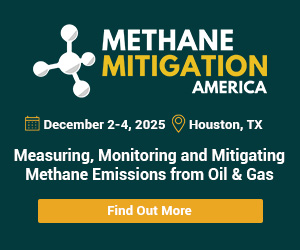
By Yogi Schulz
Breathless AI headlines promise superintelligence. However, in today’s oil and gas industry, the impact of AI is more practical—streamlining operations rather than inventing new exploration and production technologies or conquering new markets.
There is a paradox in how AI’s current phase is influencing corporate strategy. While AI is touted as a path to increased profitability, most oil and gas applications of AI today focus on reducing costs, rather than growing revenue. While trimming expenses can boost margins, this action does not deliver sustainable corporate growth.
This article provides actionable answers to AI-related questions that management in the oil and gas industry often asks.
Where is AI having the most immediate and practical impact?
AI is advancing the capability of many categories of engineering application software. Examples include oil and gas software used for predictive maintenance, process optimization and resource allocation. The benefits include reduced operating costs, enhanced safety, improved risk management, and higher confidence in decision-making.
Where will AI have the most impact in the future?
Materials science – Today, the interaction of molecules within mixtures created for materials is almost impossible to predict. This reality leads to endless, high-cost experimentation and lengthy development timelines. DeepMind’s breakthrough work on protein folding is an early example. Oil and gas applications include materials that withstand higher temperatures, pressures, and abrasion.
Text-to-design applications – AI’s ability to generate a 3D design from a short text paragraph will significantly change the nature of engineering design work. It will enable the rapid exploration of many more design alternatives. Oil and gas applications include valves, pressure vessels and gas processing plants.
AI code generation – AI’s ability to generate application code will advance to encompass entire systems. It will shift software development from a hand-crafted process to an automated one. Oil and gas applications include software for SCADA, process control, and autonomous oilsands vehicles.
How is AI changing the industry’s approach to productivity, profitability, and risk management?
AI has produced immediate productivity improvements for most disciplines in:
- Research.
- Document writing.
AI applications identify cost-reduction ideas for capital projects and ongoing operations. The ideas, often in fabrication and maintenance, have increased profitability.
AI applications in many industries actually increase risks, not decrease them. Various AI risks are not yet well understood. Even if the risk of Armageddon-type risks where AI takes over the planet and supplants humans is low, there are other risks.
For example, a recent Bloomberg article described financial risks. It’s a regulator’s nightmare: Hedge funds unleash AI bots on stock and bond exchanges — but they don’t just compete, they collude. Instead of battling for returns, they fix prices, hoard profits and sideline human traders.
Researchers say that scenario is far from science fiction. Every AI application should include a comprehensive risk assessment.
What technical, ethical, or cultural challenges are slowing AI adoption?
Companies contemplating a foray into AI should let someone else make the tools, according to a recent MIT study, which found that 95% of internal AI pilot programs fail to boost revenue or productivity. Often, technical challenges create failure.
According to Fortune magazine, the issue isn’t subpar models, it’s flawed integration. Successful implementations utilize AI to address specific problems with specialized external vendors. These projects succeed twice as often as in-house pilots. MIT also determined that too much AI spend goes to sales and marketing, even though reducing outsourcing and streamlining field operations, HR, and finance drives bigger savings.
The biggest challenge slowing AI adoption is poor data quality in internal datastores used to train the AI model. The cleanup is costly and takes considerable elapsed time. Data quality is a more significant problem for oil and gas applications than for those in many other industries, as they consume significantly more data.
Many executives are concerned about the ethical challenges that AI applications have revealed. These include:
- Risks of misunderstanding basic scientific concepts leading to dangerously wrong recommendations.
- Embarrassingly wrong answers that are termed hallucinations.
- Racial and gender biases.
Addressing the ethical challenges that AI raises requires oversight from management, engineering, and IT leadership.
What’s needed to adopt AI successfully?
Right now, all disciplines are excited by the seemingly endless potential of AI. To add some reality to all the hype, leaders should remember that companies cannot ignore business analysis or treat it superficially with AI. That means:
- Define a problem or opportunity that aligns with targeted and specific business goals – avoid a general exploration of AI technology.
- Measure what matters – don’t expect assertions or output that feels good or looks good to impress anyone.
- Ensure you’re designing for data-driven decisions – you don’t need AI if you will continue working based on experience or gut feel.
- Design human-AI collaboration that leverages their respective strengths – don’t rely exclusively on AI recommendations.
- Ask: Should we? – meaning, do we have a business case?
- Do not just ask Can we? – meaning, do we have the technical and data capability?
What should oil and gas leaders think about?
The responsibility of the board and management for governance suggests that they should focus on guidance to implement AI responsibly and effectively. More specifically, they should give the following specific AI topics attention:
- AI acceptable usage policy – define and implement an acceptable AI usage policy to clearly describe what employee uses are permissible and what is not.
- AI risk management – the fastest and easiest way to implement an AI risk management process is to adopt one of the existing AI risk frameworks. The MIT AI risk framework is one example.
- AI hallucinations – champion the expectation that all AI application development will involve significant efforts to mitigate AI hallucinations.
- Project best practices – AI application projects must adhere to best practices, just like all other projects.
- Cybersecurity for AI applications – to reduce AI cybersecurity risks in applications, the board and the CEO should sponsor a review process that ensures adequate cybersecurity defence features are included in AI applications.
- AI for cybersecurity defences – to address the increasing cybersecurity risks caused by hackers using AI in their attacks, the board and the CEO should sponsor a review process that ensures adequate cybersecurity defences are in place.
Where is AI development headed?
Today, AI is still a people-centred tool. AI waits for us to provide questions to answer. AI developments are advancing the technology to reason more like humans. This reasoning is referred to as AGI, or artificial general intelligence. AGI raises more profound questions:
- Can AI start to ask the right questions or at least propose better questions, not just answer questions we’re smart enough to pose?
- Can AI help professionals in making higher-order decisions for oil and natural gas property development or marketing strategies?
- Will AI supplant technical staff in making routine operational or purchasing decisions? How soon might that step occur?
We will soon enter a new era, where AI does more than simply responding and starts orchestrating. That is the coming age of agentic AI. Agentic AI represents a step forward from reasoning to autonomy, leading to more self-directed initiative.
In many situations, the hardest part is not finding the correct or best answer—it is knowing or at least hypothesizing what the right question or a better question is in the first place. This reality underscores a crucial truth: even the most advanced AI tools rely on human curiosity, perspective, and framing.
In the future, AI development will advance down the creative road toward AGI. Related advances will have a profound impact on all industries, including the oil and natural gas industry.
Yogi Schulz has over 40 years of experience in information technology in various industries. He writes for Engineering.com, EnergyNow.ca, EnergyNow.com and other trade publications. Yogi works extensively in the petroleum industry to select and implement financial, production revenue accounting, land & contracts, and geotechnical systems. He manages projects that arise from changes in business requirements, the need to leverage technology opportunities, and mergers. His specialties include IT strategy, web strategy, and systems project management.
Share This:




 CDN NEWS |
CDN NEWS |  US NEWS
US NEWS 































